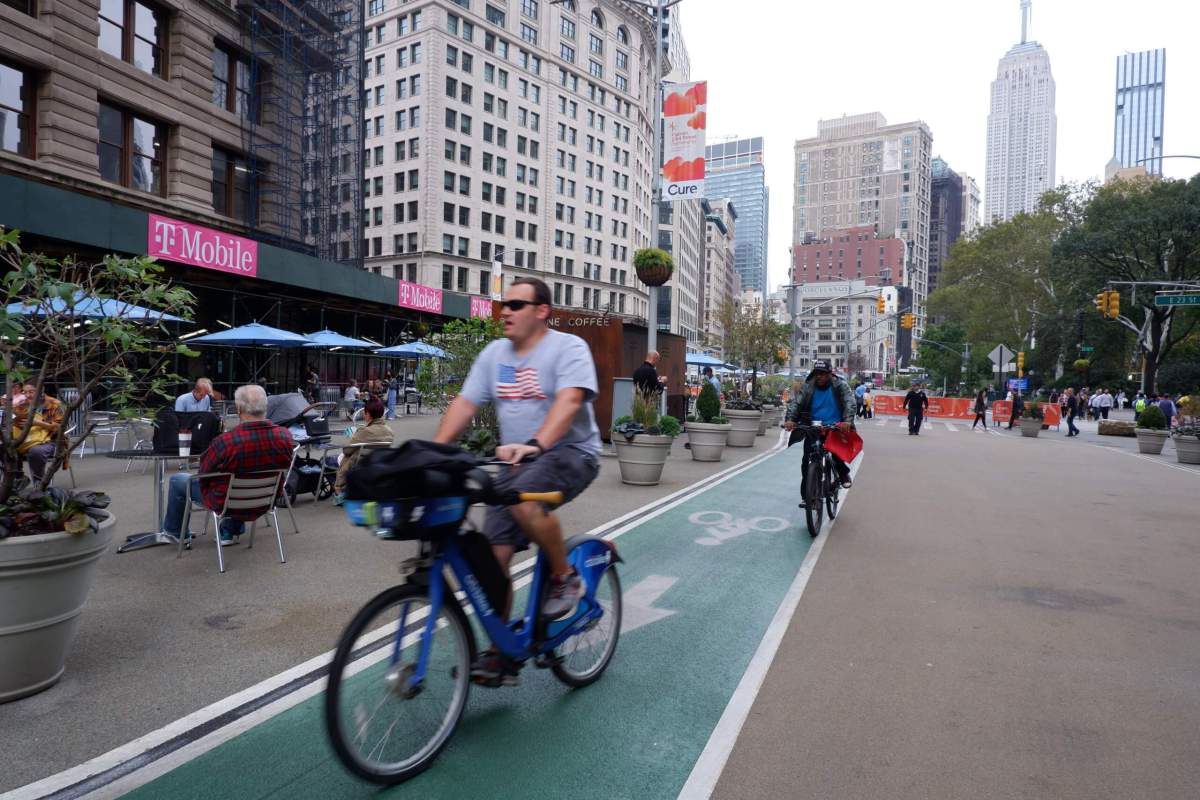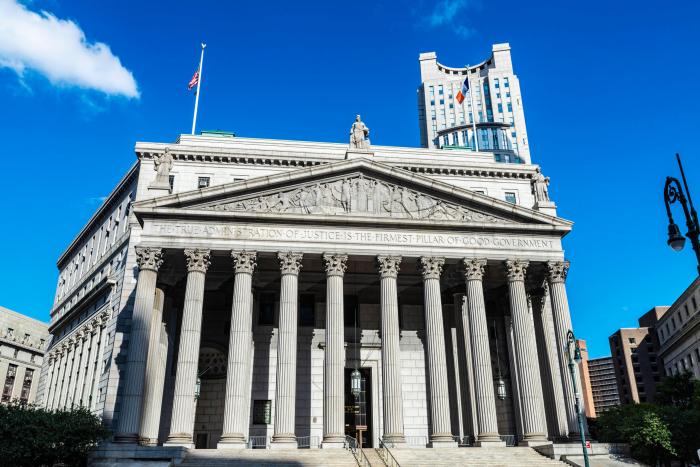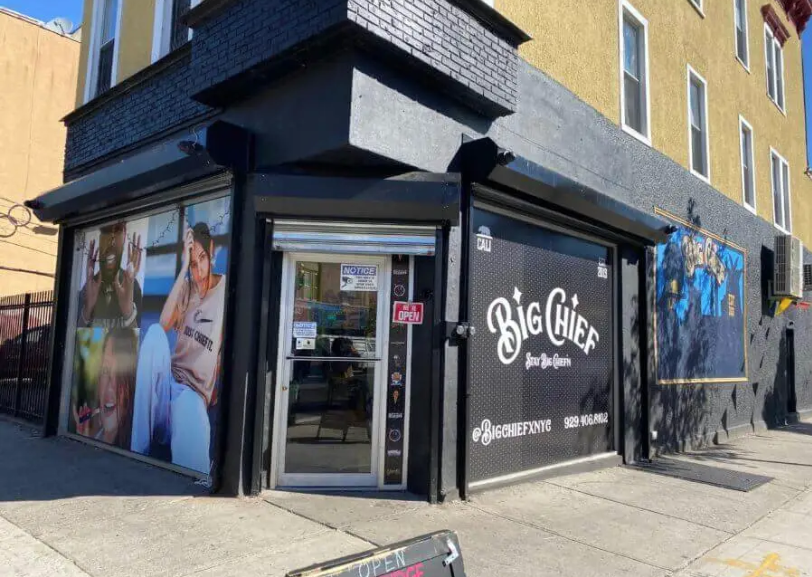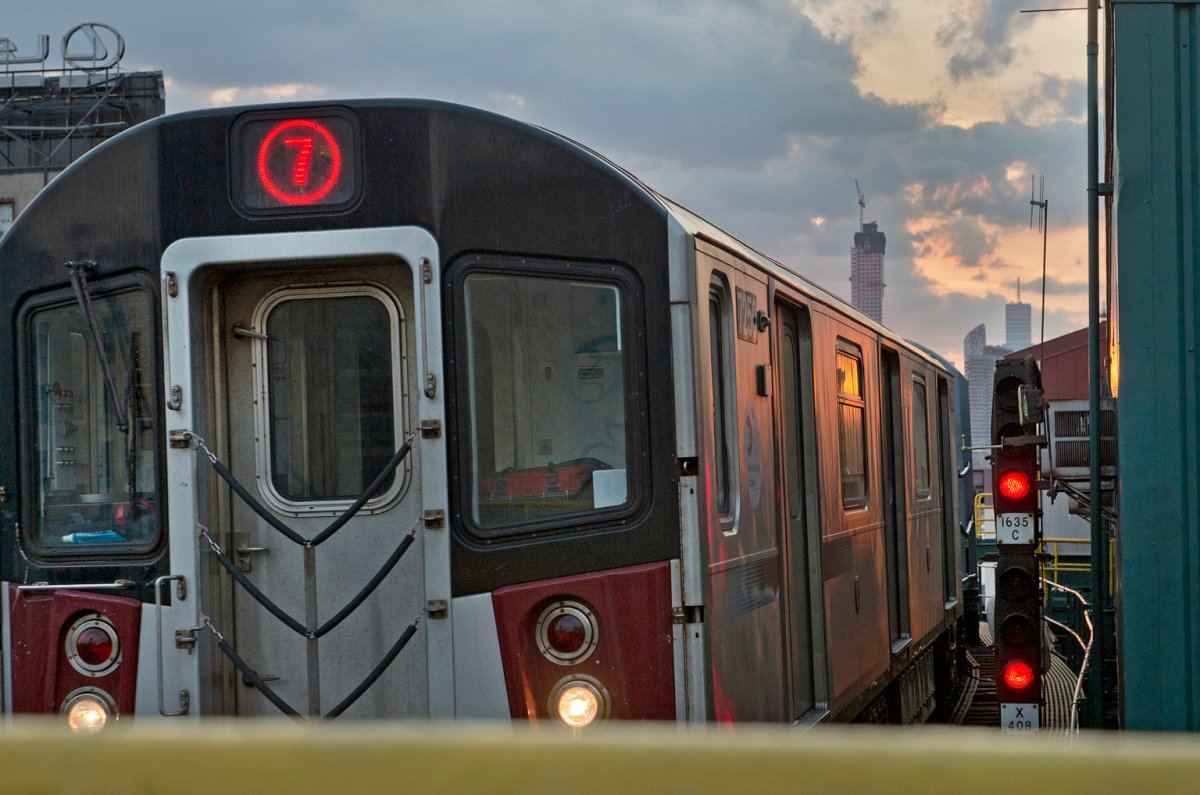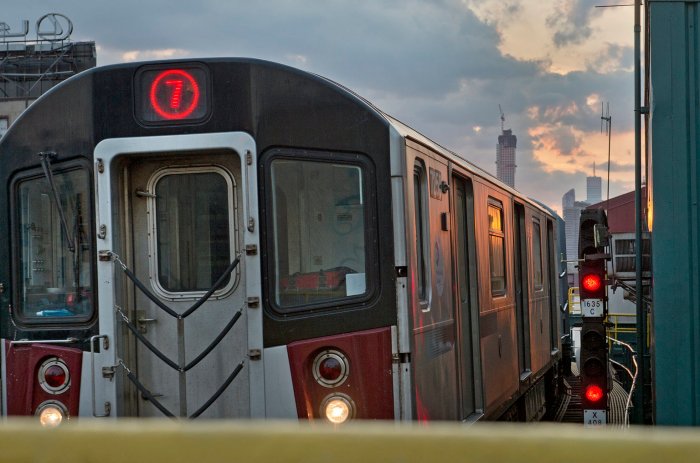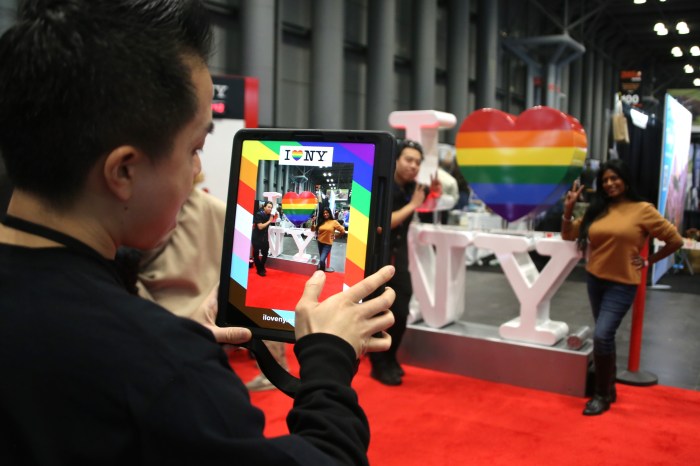Construction kicks off this week on new pedestrian plazas and shared streets along the stretch of Broadway in Flatiron and NoMad, part of a larger long-term scheme to reconfigure the famous roadway, Mayor Eric Adams announced Sunday.
Upon completion, the section of Broadway between 25th and 27th streets near Madison Square Park will be permanently transformed into pedestrian plazas. Between 27th and 32nd, Broadway will become a “shared street,” with traffic still allowed but at 5 mph speeds on a road designed with pedestrians in mind rather than cars. The roadway will feature narrower crossings, wider sidewalks, and turn-calming infrastructure.
The whole stretch between 25th and 32nd streets will also be outfitted with a two-way bike lane, the mayor said. Outdoor dining space on the stretch will be expanded, as will Citi Bike docks.
“Broadway is the pulsing heart of Manhattan,” said Hizzoner at a Sunday press conference. “The improvements we make tomorrow will shape our city for generations to come.”
The city Department of Transportation expects the project to be completed by the summer.

The project is just one aspect of the larger “Broadway Vision” to redesign the city’s most famous street between Columbus Circle and Union Square, prioritizing pedestrians instead of cars. Efforts to pedestrianize the corridor have run across mayoral administrations: the sections in Times Square and Herald Square were pedestrianized during the Bloomberg administration, with other Midtown sections seeing increased pedestrian space.
The de Blasio administration converted the section between 39th and 40th streets into car-free Golda Meir Square, and made several other stretches into shared streets.
Mayor Adams said that the horrific crash last year at Broadway and 29th Street, where a cab driver mowed down six people, made the case for pedestrianizing the stretch palpable, though he added that the plan had been in the pipeline for some time.
“I think what the terrible accident did, it highlighted why we have been focusing on creating these plazas,” the mayor said. “It was a horrific incident.”
A survey conducted last year by DOT found 42% of Broadway cyclists don’t feel safe, while over half of pedestrians think the sidewalks are too crowded.
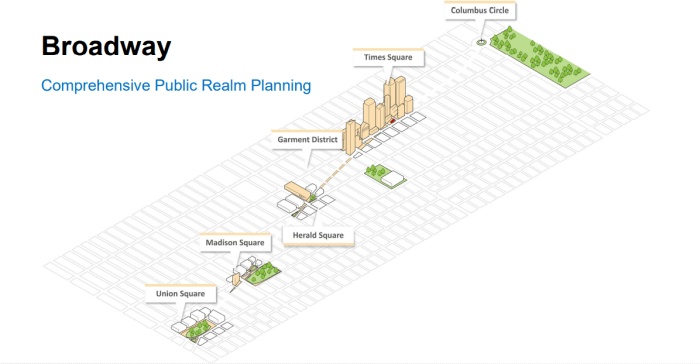
Adams, a self-proclaimed “five-borough mayor,” highlighted other pedestrianization projects in other boroughs, like the popular 34th Avenue Open Street in Jackson Heights, Queens.
“There’s a culture shift that must take place in this city,” said the mayor. “When you look at the number of drivers, the number of pedestrians that walk clearly outnumbers the number of drivers. And I am encouraging people to get out of their cars.”
Adams and DOT have nonetheless faced criticism from advocates for failing to meet statutory annual requirements for building protected bike lanes and bus lanes throughout the city. The Streets Master Plan, passed in 2019, requires the city to implement 150 miles of protected bus lanes and 250 miles of protected bike lanes across the city by 2026.
The administration is woefully behind schedule on those fronts. The Streets Plan required the administration to build 20 miles of bus lanes in 2022 and 30 miles per year going forward; the plan also mandated 30 miles of bike lanes in 2022 and 50 miles per annum afterward. But in its February Streets Plan update, DOT wrote that it only built 4.4 miles of protected bus lanes, well short of the goal. The agency also fell short on bike lanes, though not quite to the same extent, building 26.3 miles in 2022.



